Palms
With more than 2600 species and habitats ranging from 43° North to 43° South, Palms are one of the most cultivated plant families worldwide.
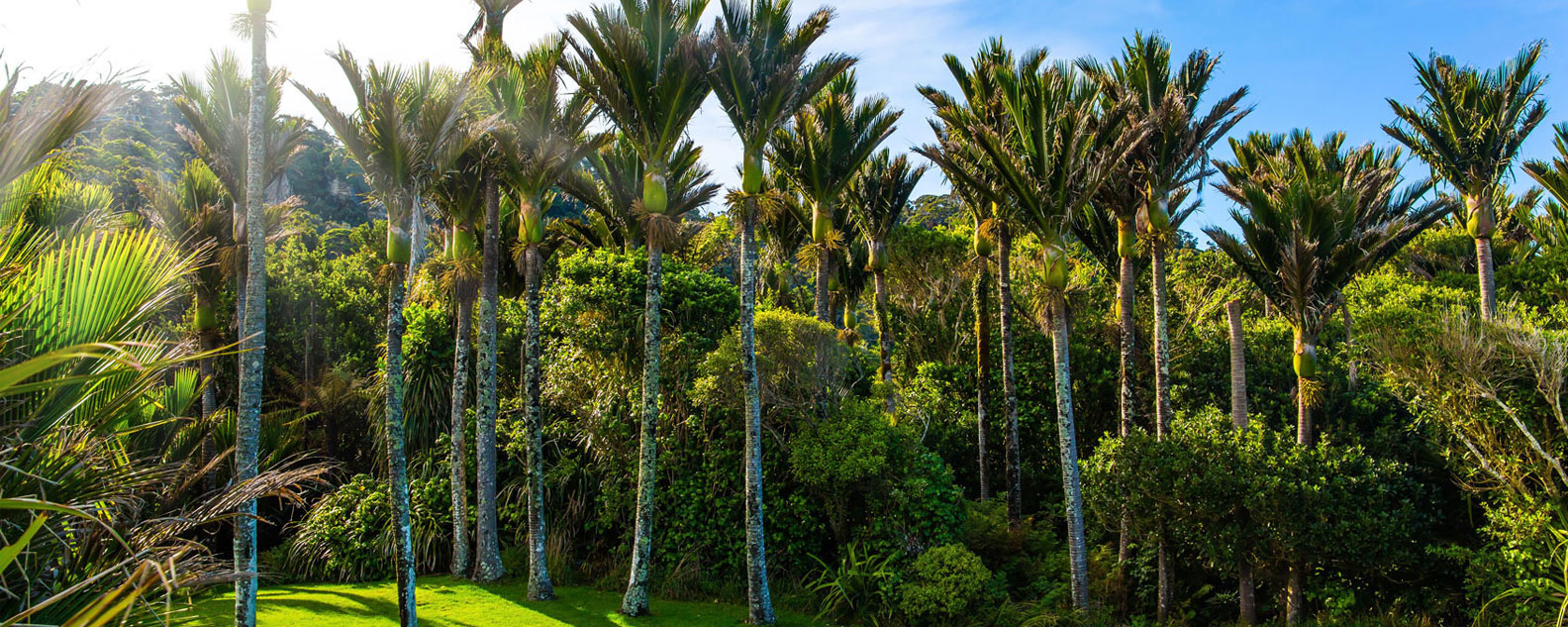
About the Arecaceae family
Palms have been highly prized and collected since the Victorian era’s Parlour Palm craze and offer today's collectors, home gardeners and indoor plant lovers a diverse range of characteristics and tolerances to environmental conditions.
Palms can be climbers, shrubs, tree-like or stemless, those with a tree-like form are usually referred to as palm trees, however, palms are monocots and closer relatives to grasses than trees. Most palms are distinguishable by their fronds, large evergreen leaves that are arranged in a crown at the top of an unbranched stem.
Palms are integral to the ecosystems of their native habitats which run the gamut from rainforests to deserts. They are of huge economic importance, ranking third after grasses and legumes in usefulness as a resource.
Garden Sign Story – The Palm Family – Arecaceae
Palms are close cousins to grasses and lilies! They grow quite differently from other trees.
Stems vs trunks
Palm tree stems grow taller and taller, but never any thicker. The stems lack cambium – the secondary growth tissue that allows trunks to expand, forming growth rings.
Hearts and Crowns
Palms have a heart – a single growing bud at the top of the stem. New leaves develop from the heart, in a cluster known as a crown.
Feathers and fans
Palm leaves come in two main forms: Feather or pinnate leaves, and fan or palmate leaves. Look closely – they always have parallel veins.
Illustrations: L Elkan
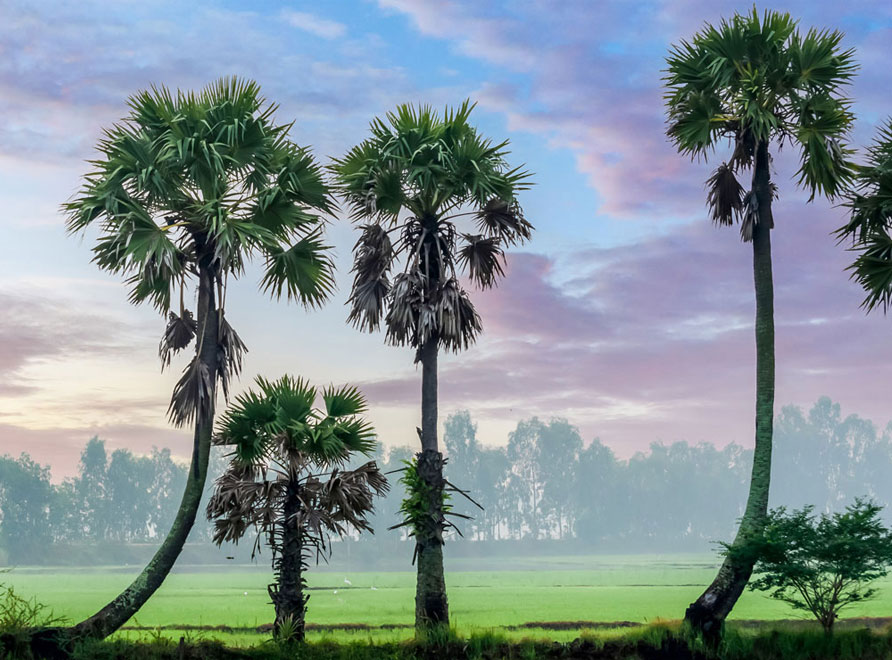
Fishtail Palms, also known as Jaggery or Sago Palms
Fishtail Palm – Caryota urens
Also known as the Jaggery Palm, the Fishtail Palm can grow to 12 metres and is native to Sri Lanka, India, Myanmar, and Malaysia, where it grows in rainforest clearings. It is a tall, striking palm tree with fish tail-shaped fronds on long green leaves.
Jaggery Palms make sweet potted plants
This versatile palm likes moist, well-drained soil and can grow in shade, semi-shade or no shade. Although it is appreciated for its ornamental qualities in Australian parks and gardens, and can also be grown as an indoor potted plant, it has many other uses.
What is Jaggery Sugar?
The sap of C. urens is boiled until it turns into a thick, dark treacle that is used as a sugar substitute called kitul honey or kitul treacle in Sri Lanka. It is boiled further to make kitul jaggary, a hard, candy-like sugar substitute used in Indian and Western cooking.
C. urens leaves are used to make baskets in Cambodia, where it is called Tunsaè and the Cambodian peoples also make wine from the sugar that is found in the cut stalks. Elephants also like this sweet treat and munch on the palm’s leaves and stems.
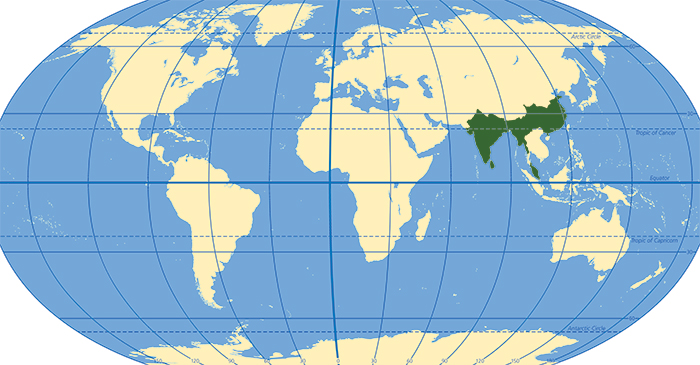
Fishtail Palm's habitat
Jaggery Palm, Fishtail Palm, Indian Sago Palm, Wine Palm, Toddy Palm, Kitul (Sinhalese), Sopari (Bengali), Mari (Hindi), Mada, Dirgha (Sanskrit), Kundal panai, Koondal panai, Thippali, Tippili, Konda panna (Tamil), Tunsaè (Cambodian)
The Fishtail Palm’s scientific name ‘Caryota’ comes from the Greek word for ‘date’, and is a reference to the date palm. ‘Urens’ is Latin for ‘stinging’, which refers to the oxalic acid found in the fruit.
The Fishtail Palm’s native range is India, Malaysia, Myanmar, Nepal and Sri Lanka. Its exotic range is Papua New Guinea, Thailand, and Vietnam.
It is found at altitudes of 500 to 1500 metres on limestone and in valley forests and as an understorey tree in moist lowland and submontane forests in its native habitat.
Caryota urens is an evergreen palm that grows to 12 metres. It has a stout trunk and is the only palm that has bipinnate leaves (leaflets that grow opposite each other on a main stem) which look like the tail of a fish.
The Asian Palm Civet, Paradoxurus hermaphroditus, also called the Toddy Cat, is a terrestrial and arboreal civet that disperses the fruit of C. urens and plays a role in regeneration of the palms in natural areas. Seeds are dispersed unharmed far from the mother tree via the civets eating the fruit.
Some magnificent Fishtail Palm specimens can be seen in the Garden, visit the Garden Explorer and type 'Fishtail Palm' into the 'Common or Scientific Name' field, then click search to be shown where.
Garden Sign Story – Fishtail Palm
Giving sugar, wine and liquor, the flowers of Kitul are sweet but they foreshadow death.
Stand-Out
The leaves are worth an extra look! These spectacular plants are the only palms with bi-pinnate leaves – dividing twice to form triangular ‘fish-tails’.
Image: A Sri Lankan Kitul-tapper, making the perilous climb to harvest sap from the flowers.
Live Hard, Die Young
In Sri Lanka and across the tropics, valuable flower-spike sap is harvested and processed to make jaggery sugar, or kitul syrup. Fermenting the sap results in tuak – a palm wine, and further distillation creates a potent liquor known as arrack. The palms start flowering at around twenty years old. Flowers bloom at the top of the trunk first, then emerge lower each year. Once they reach the ground, the palm dies.
Image: R. Coletti - FLICKR
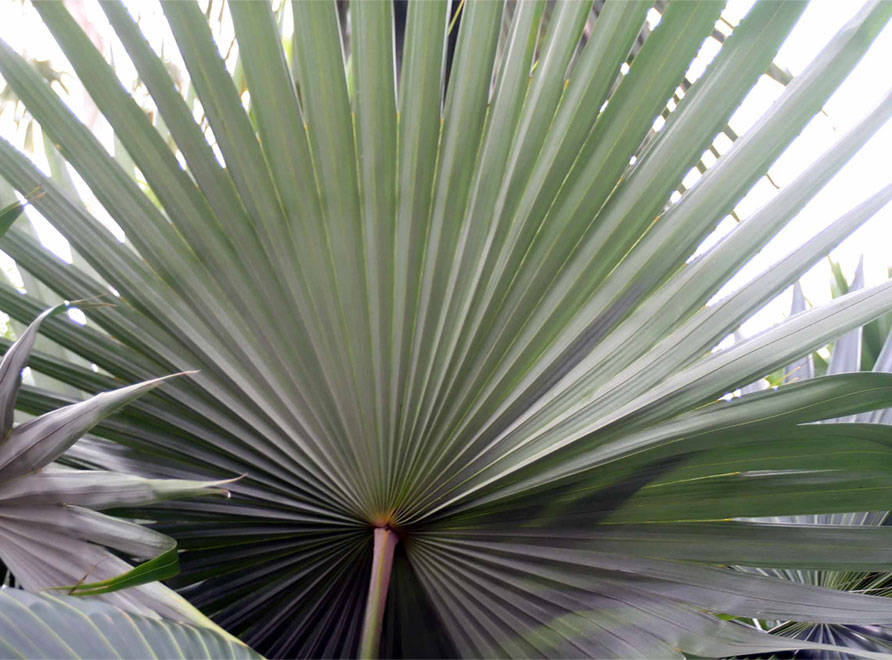
Red Cabbage Palm – Livistona mariae
Red Cabbage Palm – Livistona mariae
Known as Arankaia to the Western Arrernte peoples, the Red Cabbage Palm is a large, flowering fan palm that grows to 20 metres. This majestic, rare plant is found only in Australia’s Palm Valley in the Northern Territory’s Finke Gorge National Park where there is a stand of 3000 or more palms, some of which are several hundred years old. It is also referred to as the Central Australian Cabbage Palm due to its range.
A gift from the Gods
The Arrernte peoples’ cultural knowledge tells us that “...gods from the high north brought the seeds to this place a long time ago”. DNA analysis backs this knowledge, showing that Livistona mariae and its closest relative Livistona rigida, which grows to the north, were separated 15,000 years ago.

Livistona mariae's habitat
Red Cabbage Palm, Central Australian Cabbage Palm
Scottish botanist, Robert Brown (1773-1858) named the genus Livistona after the Baron of Livingston, Patrick Murray (1634-1671), who was the botanist and horticulturist responsible for setting up the botanic gardens in Edinburgh, Scotland.
Livistona mariae is found in the MacDonnell Ranges bioregion in Finke Gorge National Park’s Palm Valley in the southern area of the Northern Territory. Palm Valley offers the palms a permanent water supply which enhances their growing conditions. It is Central Australia’s only palm and is classed as vulnerable due to the small area it occupies.
Livistona mariae is a solitary fan palm that grows to 20 metres and has a trunk of about 30 cm in diameter. It has a dense crown that comprises up to 50 leaves that are shiny green with a waxy underside, new fronds are reddish. It produces spikes of creamy flowers followed by round fruit that goes black as it ripens.
Visit the Garden Explorer and type 'Livistona mariae' into the 'Common or Scientific Name' field, then click 'search' to be shown where the Red Cabbage Palm can be found in the Garden.
Garden Sign Story – Red Cabbage Palm
Thousands of years ago, First Nations people planted palms at Australia’s red heart.
First Nations agriculture.
In 1895, German anthropologist Carl Strehlow travelled two hundred kilometres north-east of Uluru, deep into Arrernte country. He was surprised to see palms, and according to his notes, the First Nations people told him: “...gods from the high north brought the seeds to this place a long time ago”. The Arrernte people’s cultural knowledge is supported by DNA analysis of the palms, which shows they were separated from their closest relatives (Livistona rigida) around 15,000 years ago.
Image: Red Cabbage Palm grove in Finke Gorge National Park, Northern Territory. ©IP GMBH/Alamya Long Journey. The seeds must have been carried thousands of miles by Arrernte Ancestors – brought from the far north of the continent and planted in the sheltered outback valley.
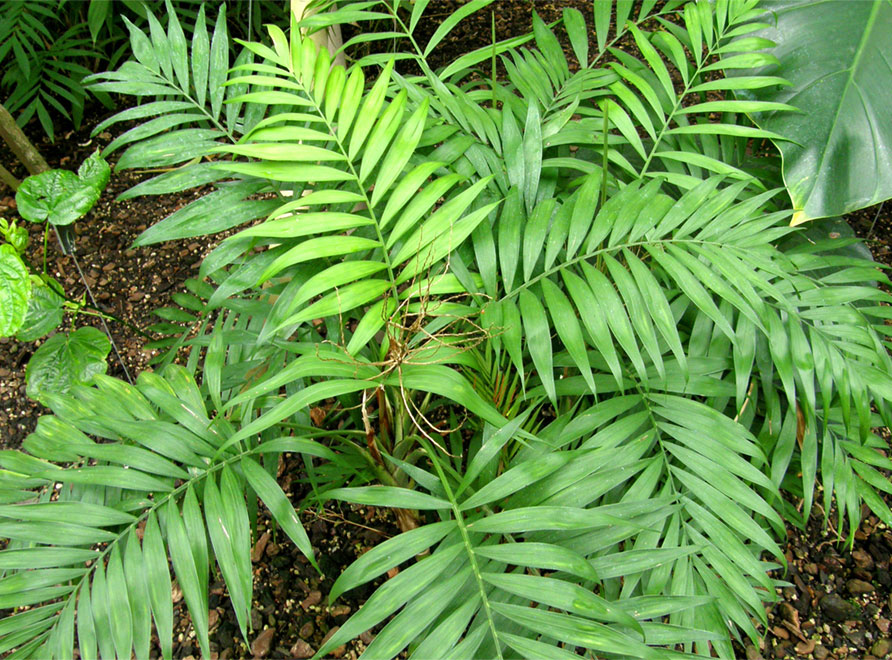
Parlour Palm – Chamaedorea elegans
Parlour Palm – Chamaedorea elegans
Native to Mexico, Guatemala and Belize, Chamaedorea are small palms with slender, cane-like stems that grow from 0.3 to 6 metres tall.
Parlour Palms – the globetrotters of the plant world
Parlour Palms have been popular worldwide as an indoor specimen since their introduction to European gardens in 1839. It is one of the most cultivated palms in the world.
Chamaedorea elegans is perfect for container gardens
One of more than 100 Chamaedorea species, Chamaedorea elegans is a solitary slender palm that grows to around 2 metres and can be planted in the garden or in a large container.
It is a tropical to subtropical palm and needs some shelter from the cold in temperate zones, it can tolerate lower light conditions.

Chamaedorea elegans' habitat
Mexican Dwarf Palm
Angostas; Tepejilote; Palma Camedor; Palma Fina; Palmilla De Hojas; Palmita Camedor; Pesmilla; Tutchast (Mexico), Kiik; Xate (Guatemala)
The name Chamaedorea comes from the Ancient Greek ‘chamai’ which means ‘on the ground’ and ‘dorea’, which means ‘gift’, which is a reference to its easily reached fruits. ‘Elegans’ is a reference to the plant’s elegant form and weeping habit.
C. elegans is native to Mexico, Guatemala and Belize and grows in moist or wet, dense forest on the Atlantic slopes to 1400 m elevation, often on limestone.
It is one of the most widely-grown palms in the world – over 400 million seeds, almost all from Mexico are distributed globally annually.
The Parlour Palm’s tiny yellow flowers are produced in panicles in spring but will not form in low light conditions. Its leaves are arranged on each side of the leaf's central stalk. It has dark green pinnate fronds that create an elegant weeping habit and grow to 60 cm long.
There are many specimens held in the Garden's collection, visit the Garden Explorer and type 'Parlour Palm' into the 'Common or Scientific Name' field, then click 'search' to be shown where.
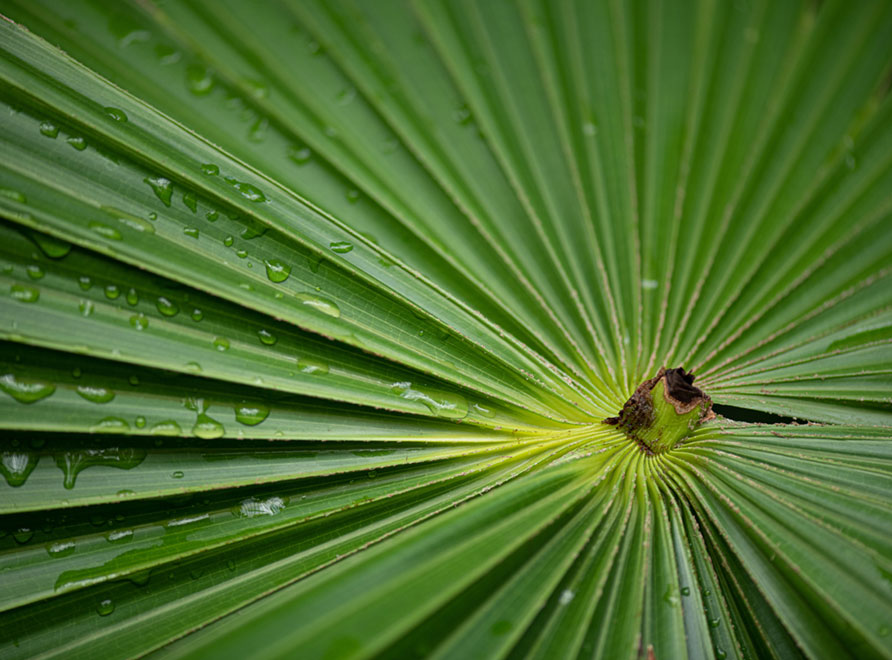
Cabbage Tree Palm – Livistona australis
Cabbage Tree Palm – Livistona australis
Known as Daranggara by the Sydney region’s Gadigal people/language group, this was one of the first palm species to be planted in the Royal Botanic Garden’s Palm Grove in 1862.
They grew in abundance around Sydney’s harbour until most of them were felled by the settlers, who harvested them for food and building materials. The settlers referred to the palms as ‘Cabbage Trees’ because the edible heart looked like a cabbage (how original!).
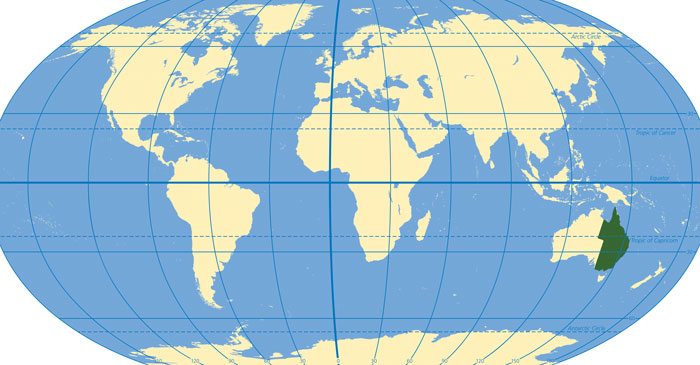
Cabbage Tree Palm – Livistona australis' habitat
Cabbage Tree Palm
Cabbage Fan Palm
Fan Palm
Cabbage Palm.
‘Livistona’ is the Latin term for Livingston, the Scottish city where the Edinburgh Botanic Garden was founded in 1670.
Livistona australis is an Australian native, growing in moist sclerophyll forest, often in swampy sites and on the margins of rainforests.
It is found in New South Wales on the Central, North and South Coast as well as in Queensland and Victoria. It grew in abundance in the Sydney area prior to the arrival of the settlers.
Livistona australis is hardy and has a single stem that grows to 30 metres and up to 50 cm in diameter. It has stiff, large, dark glossy green leaves, which divide into fan segments, giving the palm one of its common names – Cabbage Fan Palm. The stem is unbranching and the leaves are arranged at the top of the stem in the classic palm tree form.
In Summer, sprigs of cream-white flowers that are 3-5 mm in diameter appear on branched stems or flower spikes. The palm's fruit is globe-shaped, contains a single seed and turns from red to black on maturity.
Use the Garden Explorer to find one of the 59 Cabbage Trees across the Garden – they are in the Palm Grove and numerous other locations. A notable specimen can be seen on Lawn 24 near the main pond.
Use the Garden Explorer to find the 19 Cabbage Tree Palms that are scattered in various locations at the Australian Botanic Garden.
Garden Sign Story – Cabbage Tree Palm
This palm is Daranggara, well-known to the Gadigal – traditional owners of this land.
Palm fashion
Cabbage Tree hats were all the rage during the 1800s and 1900s, '…regarded almost as a uniform' – The Australian Woman’s Mirror, 1925.
Image: Famous for his hat, Cobb & Co coach-driver Edward Devine was known as ‘Cabbage Tree Ned’. ©J.K Moir C1880, State Library of Victoria
Precious palms
Daranggara once grew here in abundance. Their fibrous leaves were used by the Gadigal to make fishing lines and for weaving. The edible bud, or ‘heart’ was a food of last resort in times of need, as removing it kills the plant. Renamed ‘Cabbage Trees’ for their edible heart, Darangarra were relentlessly felled by early European colonists for food and building materials. Today, few remain in the Sydney harbour area, but you can still see them growing wild in many of our nearby National Parks. Daranggara (Gadigal language)
Cabbage Tree Palm Livistona australis
Image: The Cabbage Tree Palm, as featured in Curtis's Botanical magazine in 1877.
Illustration: Vincent Brooks Day & Son
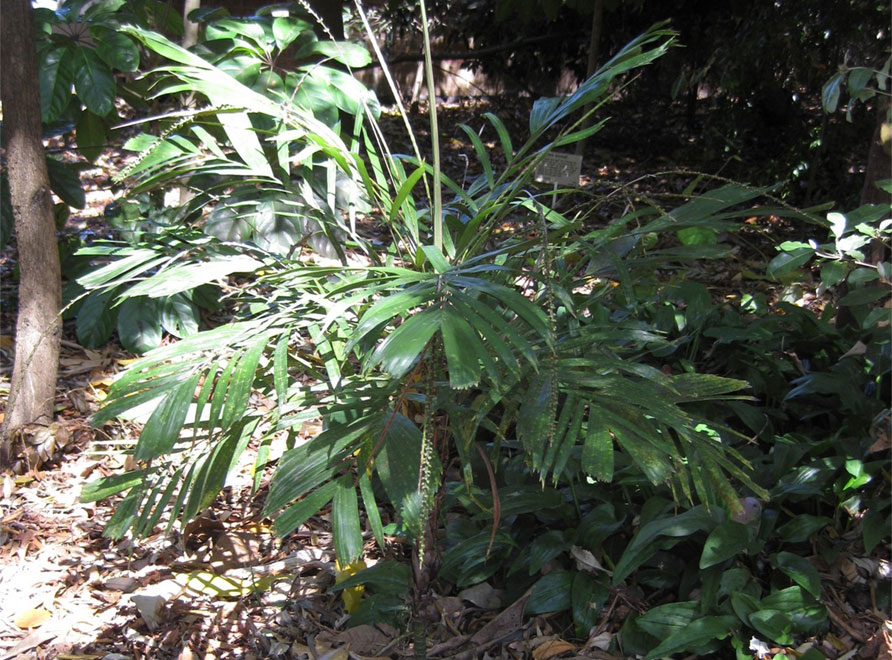
Walking Stick Palm – Linospadix monostachyos
Walking Stick Palm – Linospadix monostachyos
Called Cottan-bimbang in the Biripi/Gathang language, the common name of this small, slow-growing sub-tropical rainforest understorey palm is Walking Stick Palm. Regularly growing to 1-2 metres, it has delicate stems that grow to around 3 cm in diameter – the perfect size for a walking stick! The Walking Stick Palm can be found scattered throughout New South Wales’ Cottan-Bimbang National Park.
A small potted palm that will grow in filtered light
The Walking Stick Palm is well suited to pot culture due to its small size and slow growth rate. It prefers moist, well-drained soils until established, then it can tolerate drier conditions.
Cottan-bimbang bush foods
Bush tucker is a great source of vitamins and small native fruits played an important part in First Nations Peoples’ diets. Cottan-bimbang’s new shoots are edible, however, harvesting them kills the plant. When a Stinson mail plane crashed in Lamington National Park in 1937, the survivors lived for nine days by eating Cottan-bimbang berries.
First Nations Peoples also used the stem for spears and fishing rods, as well as stripping the leaves and using the fine lining as a string.
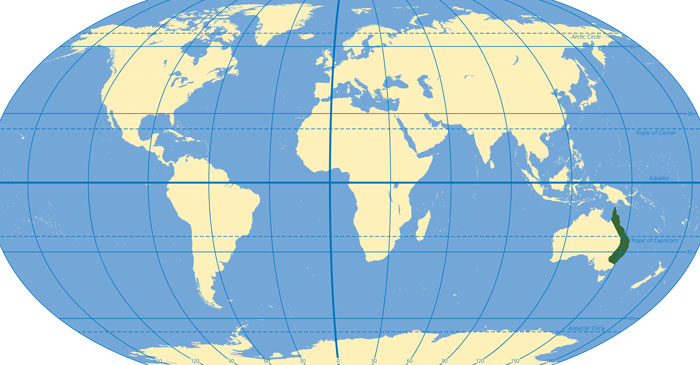
Linospadix monostachyos' habitat
The genus name is a combination of the Greek words ‘linos’ which means thread or rope, and the Latin ‘spadix’ which means to draw, or pull. The species’ name ‘monos’ means alone or unique, and ‘stachys’ means spike, both of which reference the flower being a single spike.
The Walking Stick Palm’s common name comes from its strong straight stem. It was harvested after World War 1 to make walking sticks for injured returned soldiers. The compact root ball found at the base of the stem made a comfortable grip.
The Walking Stick Palm grows on the coast and ranges of New South Wales north of Singleton, the North Coast and Queensland. It grows at altitudes up to 1200 metres and often grows in colonies (sometimes up to 6-8 plants per square metre) alongside the Bangalow Palm (Archontophoenix cunninghamiana).
Its natural habitat is cool and humid, it grows shaded by the canopy in sheltered spots and tolerates filtered sun. It thrives in sub-tropical or tropical areas but is a hardy plant and as soon as it’s established will grow in cooler climates.
The Walking Stick Palm has a slender single-stemmed trunk with bamboo-like rings. It has a dense crown of weeping fronds of glossy green, feathery leaves. The fronds grow to 30-100 cm long. It has dramatic, long, pendulous cream-coloured flower spikes from August to October. Its edible, waxy berries appear in Autumn and grow to 10-12 mm long.
There are specimens of Cottan-bimbang in the Palm Grove and scattered throughout other areas of the garden, visit Garden Explorer to find them.
The Australian Botanic Garden also has L. monostachyos in its collection, use the Garden Explorer to find it.
Garden Sign Story – Walking Stick Palm
These little palms are stronger than they look! Slender yet sturdy, they are the perfect choice for a demanding job.
Unsung heroes
These understorey palms play a vital role in the endangered ‘Big Scrub’ rainforest community. They provide food and shelter for many small birds, mammals, and reptiles. Image: Southern Angle-headed Dragons hunt for insect prey above the forest floor, and sleep balanced on small branches or vines!
Image: ©J. Bartonik/Shutterstock
Stick the walk
From top to bottom, the straight stem is around three centimetres wide – the perfect size for a walking stick. After World War I, many of these native palms were harvested and fashioned into walking sticks for returned wounded soldiers. Cut to size, the stem was polished and the base carved and sanded into a smooth hand grip.
Image: Returned Australian soldiers – World War 1 ©KAYE FLICKR.
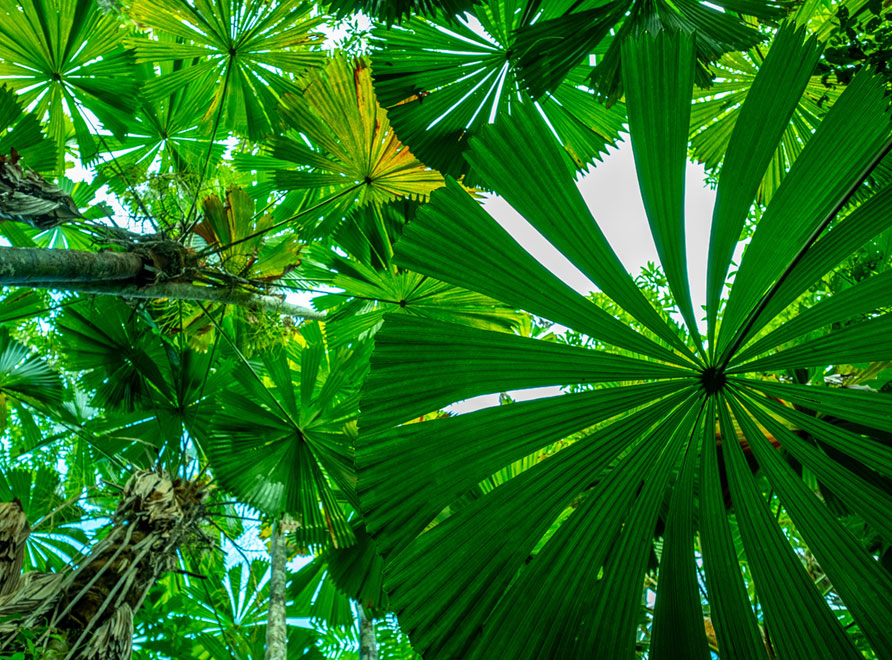
Fan Palm – Licuala ramsayi
Fan Palm – Licuala ramsayi
Named Jagarru in the Girramay language of the First Nations peoples of far North Queensland, this palm is a native of the moist, tropical rainforests of northern Queensland where the Cassowaries roam. Jagarru is a medium-sized palm growing from 15 to 25 metres. It has pleated, fan-like, almost circular leaves. Given the right conditions, it grows in stands, creating ‘fan palm forests’.
Plant your Fan Palm in a warm, shady place
When the Australian Fan Palm is juvenile it prefers heavy shade but it is sun hardy and cold tolerant (although not frost tolerant) when it reaches maturity. It is a slow-growing, desirable plant for the warm shady spot in your garden.

Licuala ramsayi's habitat
Fan Palm
Australian Fan Palm
North Queensland Fan Palm
The genus name ‘Licuala’, comes from the Maluku Islands of Indonesia where the palms are called ‘leko wala’.
German-Australian botanist and Director of the Royal Botanic Garden Melbourne, Ferdinand von Mueller gave the palm the epithet ‘ramsayi’ in 1874 for Edward Pearson Ramsay (1842-1916).
Ramsay was a zoologist and ornithologist, Curator of the Australian Museum 1874-1894 and founder of the Linnean Society of NSW.
Licuala is a genus of around 135 species, it grows from Bhutan and eastwards through South East Asia to Indochina, the Philippines, through Malesia and eastwards to Vanuatu, and Australia where Licuala ramsayi is endemic, and two other varieties are recognised: Licuala ramsayi var. ramsayi and Licuala ramsayi var. tuckeri.
The Australian Fan Palm grows in swamps, along riverbanks and in moist rainforests from North East Queensland around Cooktown and South to Ingham. It grows in the Licuala Rainforest near Mission Beach, Tully, the Daintree River and Cape Tribulation.
Growing from 15 to 25 metres, the Fan Palm has a straight, slender stem, that grows up to 20 cm in diameter. Its crown of fan-shaped leaves grows up to 2 metres long and has feather-like fronds. The leaflets are bright green and they have a silvery underside.
Fan Palms can have several flowering spikes growing up to 2-3 metres long with small cream-coloured flowers growing along the spike. Its fruit is globe-shaped and the colour changes to orange/red when mature.
Visit the Garden Explorer to be shown where Fan Palms are found in the Garden.
Visit the Garden Explorer to be shown where Fan Palms are found in the Garden.
Garden Sign Story – Jagarru
This palm is Jagarru, the heart of Connection to Country for the Girramay people of northern Queensland.
People of the palm
Girramay means ‘where the saltwater meets the freshwater’. Girramay people have a deep connection to Jagarru — it symbolises their cultural identity and their relationship to the land. When a Girramay person dies, their grave is marked with a Jagarru leaf and a spear. This is to keep their identity and protect themselves in the spirit world.
Image: Kalkani Choolburra, a proud Girramay woman. ©S. Daniel
Rainforest gardeners
Foraging in the forest, Australia’s largest birds do a vitally important job. Cassowaries gobble up the fruits from hundreds of different plants. Dispersing seeds far and wide in their droppings, they maintain the diversity of the rainforest.
Image: Southern Cassowary (Casuarius casuarius) ©T. Purche Shutterstock
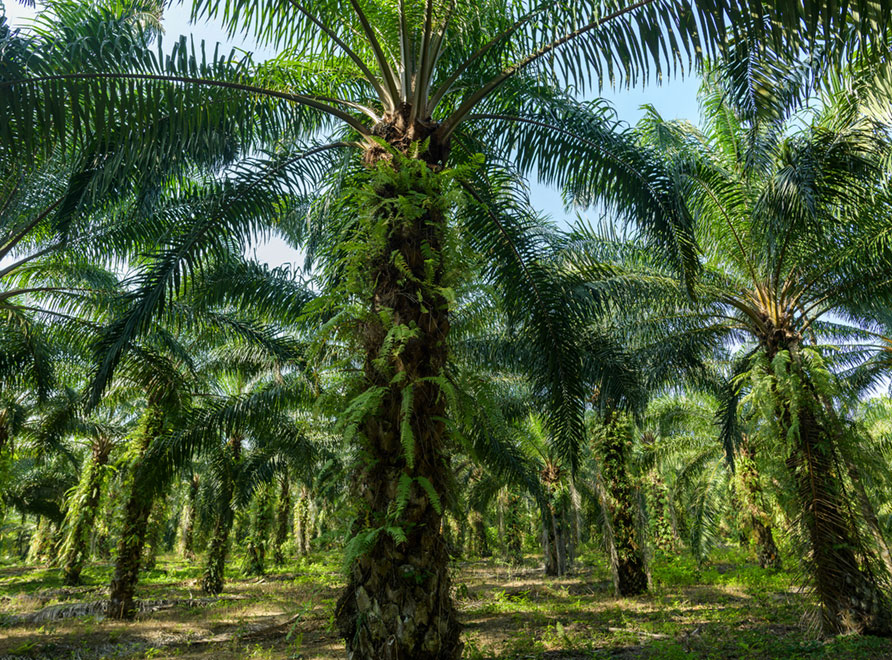
African Oil Palm – Elaeis guineensis
African Oil Palm – Elaeis guineensis
Elaeis guineensis is native to the lowland humid tropics of West and South West Africa, it is tall and slow growing with large leaves and has a single trunk that reaches up to 20 metres when planted in full sun. The Palm Oil Tree is an important source of medicines and food for First Nations Peoples.
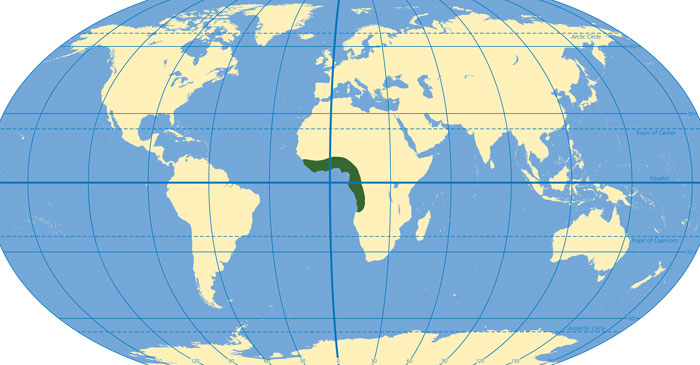
Elaeis guineensis' habitat
Palm Oil is one of Africa’s most economically valuable plants and the products it is used in are as diverse as soap, biscuits, cooking oil, margarine, vegetable ghee, bakery fats, shampoo, ice cream, industrial lubricants and engine fuels.
However, the industrialised production and escalation in the use of Palm Oil globally have led to it becoming the most widely consumed vegetable oil on the planet, which has triggered a range of sustainability issues.
Global demand outstrips production and the clearing of plantations and forests is destroying the habitats that many species including orangutans, elephants, and tigers live in. The loss of habitat, the corresponding increase in air, soil and water pollution and the compounding effects of climate change are causing big problems in locations where Palm Oil Trees are grown, especially in Indonesia and Sumatra.
African Oil Palms can produce much more oil per unit of land area than most other oil-producing plants – 9 times more than soy and 4.5 times more than rapeseed (which is also known as canola).
The African Oil Palm produces two types of oil – palm oil and kernel oil. Palm oil is extracted from the fruit and kernel oil is extracted from the seed. It is a non-drying oil and an alternative to coconut oil. Economies of scale and its versatility across a range of industries have led to the increase in palm oil production.
The heart of Elaeis guineensis is used in the treatment of gonorrhoea, menorrhagia, and perinatal abdominal pain. The palm’s leaf sap is used for skin conditions and its roots are analgesic.
Watch this WWF Australia video ‘What is Palm Oil?’ to learn more.
Mchikichi, mjenga (Kiswahili, Bantu language spoken by the Swahili people of Tanzania)
Mubira, munazi (Luganda, Bantu language of the Baganda people, widely used in Uganda)
African Oil Palm
The genus name ‘Elaeis’ is derived from the Greek word ‘elaion’, meaning oil. The species name ‘guineensis’ refers to the name for the area where it grows, specifically the area between Angola and the Gambia, known as the Guinea Coast (not the modern country of the same name).
Elaeis guineensis is native to the lowland humid tropics of West and South West Africa. Its distribution range is tropical west and central Africa, from Sierra Leone to Uganda and Kenya, south to Angola and Mozambique.
It is not known when the species was first domesticated but the human use of oil palms dates back to at least 5,000 years ago in Egypt.
In its native range, the African Oil Palm grows in riverine forests or freshwater swamps, although it is sometimes found at the ecological extremes of savanna to rainforest. It is most often found growing in tropical dry to tropical wet forest vegetation. It is shade intolerant, needs adequate soil moisture and can tolerate periodic waterlogging.
Elaeis guineensis is a tall palm with a single trunk, reaching 8-20 metres tall. The trunk is stout, grows up to 75 cm in diameter and is covered in spent leaf bases. Its dark green leaves are large and have spines along the leaf stalk.
Small flowers which are pollinated by insects cluster on large heads close to the Oil Palm’s trunk and among its leaves. It has oblong plum-like fruits that turn from green to orange and then black when ripe. The fruit is red at the base and has thick, ivory-coloured flesh with a small cavity in the centre. It forms in large clusters of 200-300 close to the trunk on short, heavy stalks. The Oil Palm’s nuts have a fibrous covering which contains the oil. Its seeds are dispersed by animals.
Visit the Garden Explorer to be shown where African Oil Palms are found in the Garden.
Garden Sign Story – African Oil Palm
Palm oil is everywhere. From chocolate to shampoo, it’s the most widely used vegetable oil on Earth.
Shop for good
There is an ever-growing demand for palm oil in the food and cosmetic industries. Across the tropics, huge areas of rainforest continue to be burned and felled to make way for illegal plantations. Rainforest dwellers including Sumatran Tigers and Orangutans are losing their homes – and are now in danger of extinction. You have the power to make a difference! When you’re shopping, purchase products that contain Responsibly Sourced Palm Oil (RSPO).
Image: Asian Elephants are edging closer to extinction, displaced by illegal Palm Oil plantations. ©N. Maneekhot Shutterstock
Rainforest champions
Look for the RSPO label when you’re shopping. You’ll find it on food products including breakfast cereals, ice creams and instant noodles. It’s also on cosmetics soaps and shampoos.
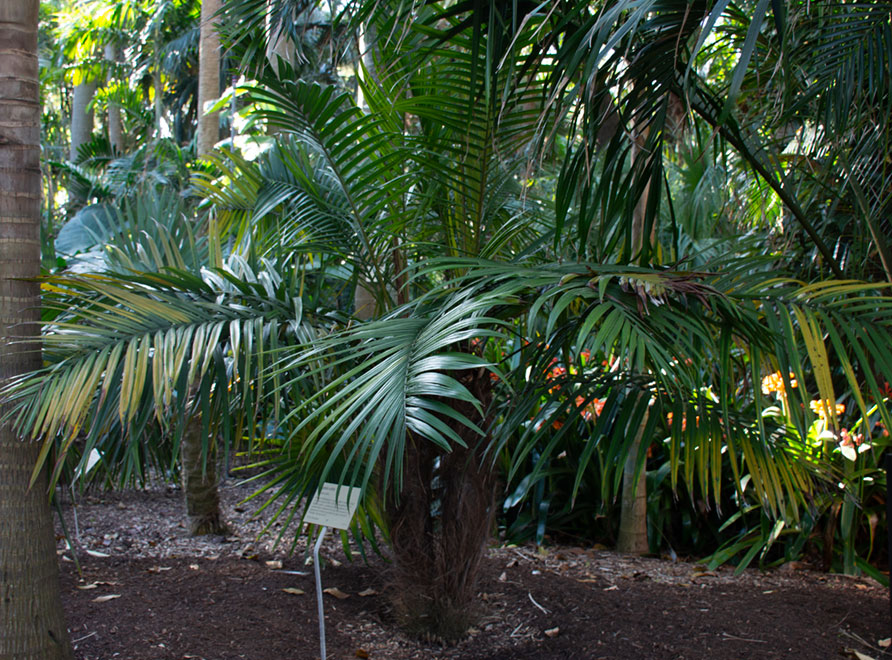
Gouane Palm – Dypsis utilis
Gouane Palm – Dypsis utilis
Native to East Madagascar, the Gouane Palm is an ornamental plant that grows to 6-17 metres, it is a robust solitary growing palm but often forms clumps. It is listed on the IUCN Red List as endangered by habitat loss.
Gouane Palm is a sweet treat and plant medicine
The heart of the palm and the sugary fruit pulp can both be eaten. The bark and/or the fruits are used as plant medicines for the treatment of headaches, jaundice and hepatitis, as well as aiding lactation. Like many palms, the stems provide a useful fibre.
One of the largest groups of Palms
Dypsis is one of the largest genera in the palm family, containing more than 170 species which range from the tiny understory palm Dypsis minuta to the Monster Dypsis (Dypsis decipiens). There is an enormous range of diversity in form and habitat in the genus. Unfortunately, many Dypsis species are endangered or threatened with extinction because of deforestation in their native habitats.

Dypsis utilis' habitat
Vonitra
Vonitrandrano
‘Dypsis’ is derived from the Greek ‘dyptein’, to dip or dive, which refers to the dipping tips of the palm’s fronds. The species name ‘utilis’, refers to the Latin word for useful, which references the many uses of the palm by the Madagascan people.
The Gouane Palm is endemic to East Madagascar where it is threatened by habitat loss. It also grows from Africa to central eastern Madagascar.
It grows along streams in swamp or moist forest in lowland and montane forest where it may form dense stands along stream banks. Its listing as endangered is due to its habitat being cleared for the cultivation of rice and logging. It is also threatened because of the over-harvesting of its seed and edible palm heart.
83% of Madagascar’s palm species are threatened with extinction. (2012)
Dypsis utilis is an evergreen clumping palm that can grow to 17 metres. It produces several main stems that are also able to produce up to 3 side shoots. The side shoots grow upwards parallel with the main stem. Each stem has a crown of large leaves that are dark red when they first appear.
Loose, branching clusters of small yellowish flowers are borne among the leaves. The branching habit and dark red colour of new foliage make the Gouane Palm popular with palm collectors.
Visit the Garden Explorer to find the Gouane Palm in the Palm Grove.
Garden Sign Story – Dypsis Palms
We all know the Golden Cane Palm (Dypsis lutescens), but many other Dypsis palms are rare and threatened with extinction.
Dwarf Palm
The smallest palm in the world is Dypsis minuta. Its stem grows to around 40 cm at full size.
Image: A tiny Dypsis minuta flowering at around 3 cm tall! © G. Brace Palmpedia
On the brink
This hairy ‘Cousin It’ palm is native to the swamp forests of Madagascar’s southeast. Like many of the island’s Dypsis palms, its habitat is under constant threat from land clearing and logging. Over a hundred Dypsis palms are on the International Union for Conservation’s Red List of Threatened Species. The Garden’s collection includes many of these Vulnerable and Critically Endangered palms. These are a safety net for species that may otherwise be lost forever.
Image: Dypsis ambositrae, growing nearby in Bed 125, is Critically Endangered. This photo shows one of only three known locations in Madagascar. Since this photo was taken in 1999, these palms have been destroyed. ©William J. Baker Royal Botanic Garden Kew
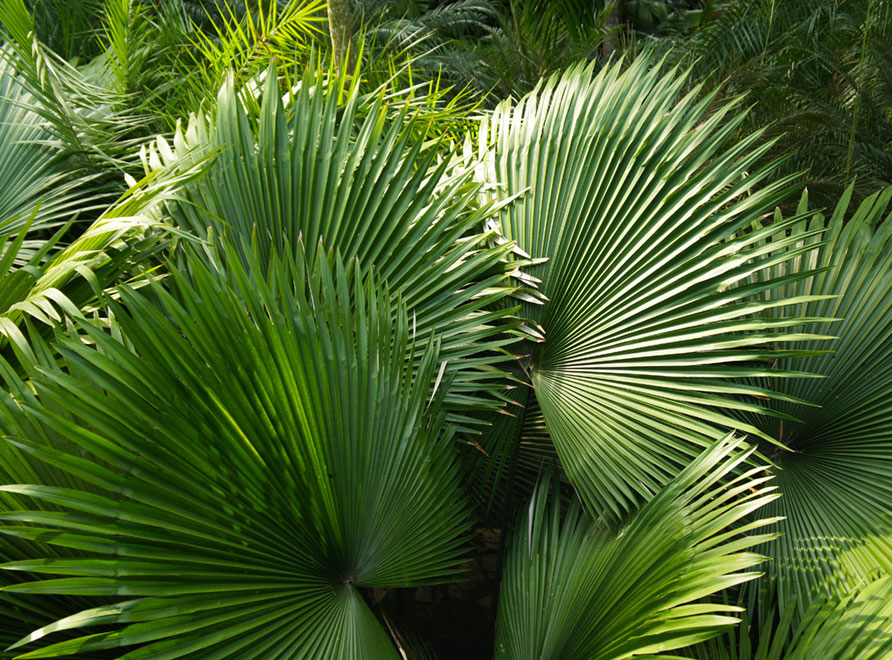
Talipot palm – Corypha umbraculifera
Talipot palm – Corypha umbraculifera
Although the Talipot Palm is a magnificent specimen tree, First Nations Peoples have many uses for it as a food and fibre. The sap of Corypha umbraculifera is tapped to make palm wine, its leaves are used for thatching and historically as a paper product to create manuscripts.
On India’s Malabar Coast, the palm’s leaves were used to make umbrellas – just one of its leaves can shelter 10 people from the rain!

Corypha umbraculifera's habitat
In India, Corypha umbraculifera is known in many different dialects. Kudapana (Malayalam), Talo (Odia), Sreetalam (Telugu) and Kudaipanai (Tamil).
In the Philippines, it is known as Buri or Buli.
Cambodians know it as Tréang and also by the French name Latanier.
Talipot Palm
Great Fan Palm
The genus name ‘Corypha’ is from the Greek word for ‘summit’ which refers to the giant flower spike. The species name ‘umbraculifera’ is from the Latin for ‘shade-bearing’ which alludes to the majestic palm’s giant leaves and crown.
‘Talipot’ is derived from the Sanskrit words ‘tãlī’ which means fan palm and ‘pattra’ which means leaf.
The Talipot Palm’s native range is South-west India and Sri Lanka. It was introduced into Bangladesh, Cambodia, Myanmar and Thailand, and is also found in the Andaman Islands and Trinidad-Tobago. It grows in tropical climates from sea level to 600 metres on light stony soil in moist deciduous forest.
The Talipot is one of the largest palms on earth, reaching up to 25 metres. Also known as a Fan Palm, it has leaves that grow up to 5 metres across, on stems that can grow to 4 metres long. Its crown comprises up to 130 leaflets which can grow to 1.3 metres in diameter.
The largest flower of any plant on earth grows on the Talipot Palm. Its 6-8 metre branched flower stalk forms at the top of the trunk and bears millions of small flowers. It flowers only once when it reaches 30-80 years of age, the yellow-green fruit that number in the thousands take almost a year to mature. They are 3-4 cm in diameter and each fruit contains a single seed. Once the Talipot Palm has fruited it dies.
Garden Sign Story – Family of Champions
Palms have a tropical island vibe, but that’s just for show. This is a family of hard workers.
Family of champions
Millions of people rely on palms for food, building materials and more. In the wild, they are often keystone species — supporting thousands of creatures, large and small. Palms hold world records including:
25 metre-long leaf – Raffia Palm (Raffia regalis)
8 metre-long flower-spike – Talipot Palm (Corypha umbraculifera)
25 kilogram seed – Coco de Mer (Lodoicea maldivica)
Image: Coco de Mer palms produce the worlds’ largest seeds. ©DPA Picture Archive Alliance Alamy
Far and wide
They’re a far-flung family, with around 2,600 species across the world. There are diversity hotspots in Malesia, New Guinea, New Caledonia, and Madagascar.
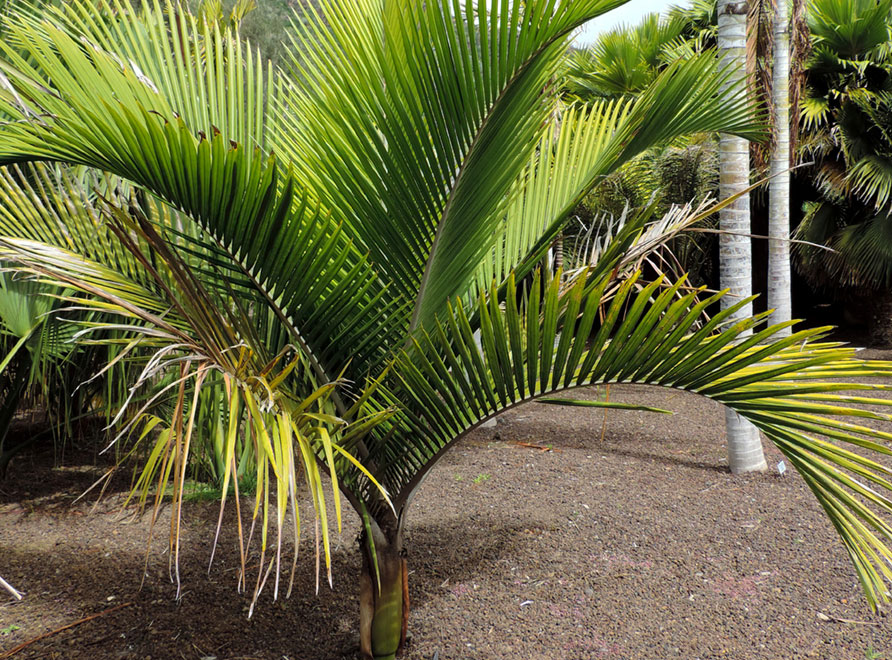
Nīkau – Rhopalostylis sapida
Nīkau – Rhopalostylis sapida
New Zealand’s only mainland native palm (a second species, Rhopalostylis baueri grows on the Kermedic Islands), the Nīkau is the world’s southernmost palm species, growing to 43° South of the Equator. It is a majestic plant that grows to 10-15 metres in coastal to lowland forests from the far north of the North Island and as far south as Ōkārito, Banks Peninsular and the Chatham Islands.
Nīkau is a hardy potted palm
Nīkau makes an excellent potted palm and can cope with low temperatures, although it is slow growing. It looks just as good as a specimen plant or mass-planted with other palms and sub-tropical plants. In its native habitat, it grows in stands.
Māori uses of Nīkau Palm
The Nīkau’s leaves were used as thatch on buildings and also provided a useful fibre for weaving.
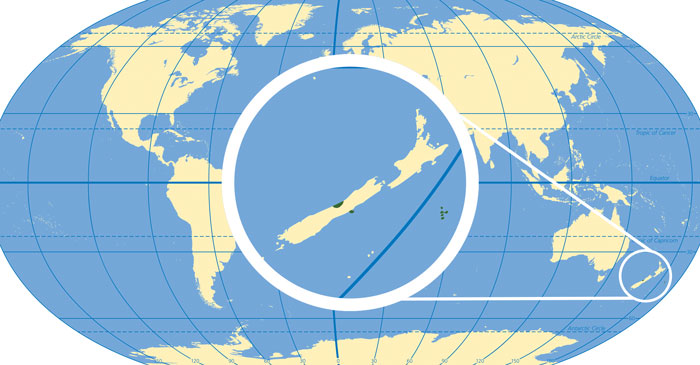
Rhopalostylis sapida's habitat
‘Rhopalostylis’ is Latin for 'club style' and ‘Sapida’ means 'savoury/tasty' which references the edible flowers.
Nīkau is a Māori word closely related to other Eastern Polynesian languages of the tropical Pacific, which reference the fronds or leaves of the Coconut Palm.
Nikau is said to mean ‘without nuts’ which may be a reference to its similarity to the coconut palms already familiar to Māori when they arrived in New Zealand.
As the palm grows, its stout, green trunk bears grey-green leaf scars. The trunk is topped with a smooth bulge that can grow to 1 metre long and is crowned with fronds that can be up to 3 metres long. Fronds can fan to reach a span of 3 metres.
Nīkau’s scented, pink-lilac flowers appear between November and April on multiple spikes at the top of the trunk. After flowering, masses of rounded red berries 10 x 7 mm form. The berries take a year to ripen and are the favourite food of the Kererū, a native pigeon.
The Nīkau Palm is native to New Zealand’s North and South Islands from the far north of the North Island to Ōkārito in the west and Banks Peninsula in the east of the South Island and in the Chatham Islands.
It grows in coastal to lowland forests in the warmer parts of New Zealand and can tolerate cool but not freezing temperatures in its southernmost habitats. It grows best in a mild Mediterranean climate, on deep, well-drained soils in full sun or full shade.
Visit the Garden Explorer to find the Nīkau Palm in the Garden.
Garden Sign Story – Nīkau
Far from the equator — the Nīkau is the most southerly palm in the world, braving gales and winter frosts!
Sub-zero palms
The Nīkau is mainland New Zealand’s only native palm. It grows in lowland forests to 43° south; just below Christchurch. The flowers are edible, and Māori traditionally use the leaves for weaving and building. Oddly, Europe’s only palm, the Mediterranean Fan Palm, grows to exactly 43° north! It’s the hardiest palm of all, braving temperatures down to -12°C.
Image (left): A manu tukutuku – a Māori kite, made by students at Pakaraka School in the north of New Zealand. A Nīkau leaf has been woven and decorated with shells and feathers. ©Pakaraka School
Image (right): A Mediterranean Fan Palm (Chamaerops humilis) growing in Sicily. ©T. Grasso CC BY-SA 2.5
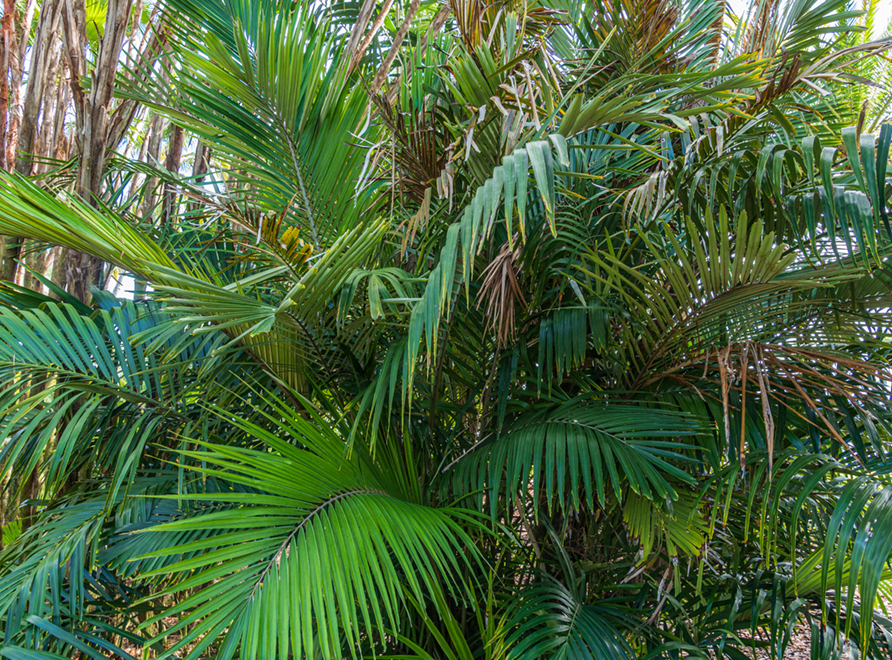
Taiwan Sugar Palm – Arenga engleri
Taiwan Sugar Palm – Arenga engleri
The Taiwan Sugar Palm is considered to be one of the best landscape and tropical palms for large gardens. It is a clumping evergreen that grows to 4 metres. In Taiwan the palm sap is harvested from the flowering stems to make sugar.
Landscapers are sweet on the Sugar Palm
The Sugar Palm is grown as an ornamental or specimen plant in large, landscaped gardens and botanic garden collections.
Its yellow-orange flowers have a fragrance like apricot nectar, which attracts bees, butterflies and birds. The flowering stalk dies after setting seed and the plant produces suckers. The flower bud is edible, but the fruits and seeds are toxic, causing itching and irritation to the skin. Gloves should be worn when touching them and they should not be eaten.
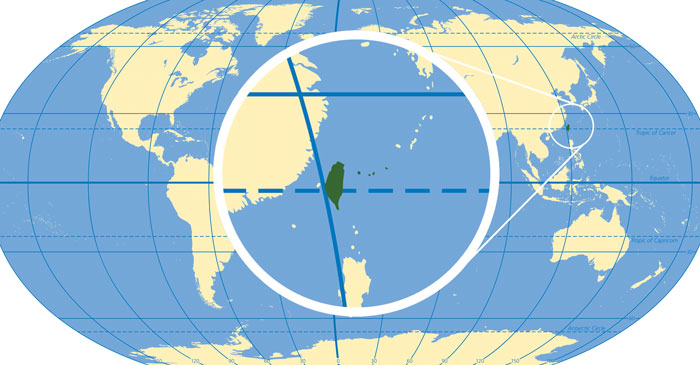
Arenga engleri's habitat
Soan-tsang (Taiwanese)
Tsung (Chinese)
Kuro-tsugu, Mani (Japanese)
Shan-tsong (Mandarin)
Formosa Palm
Dwarf Sugar Palm
Taiwan Arenga Palm
Taiwan Sugar Palm
‘Arenga’, comes from the Malay word ‘areng’ which means charcoal and references the fine black fibres that cover the stems. The species name ‘engleri’, is named for Heinrich Gustav Adolf Engler (1844 – 1930), the author of the system of classification of the plants that bear his name.
The Taiwan Sugar Palm grows on slopes in the lowland forests of Taiwan or in open forests at elevations below 900 metres. It is also found in the Ryukyu Islands in Southern Japan, where it is known as Mani.
The Taiwan Sugar Palm is one of the most cold-tolerant palms in the world. It is a small, multi-stemmed evergreen that grows in clumps up to 3 metres tall and 5 metres wide. Its unbranched stems are crowned with a rosette of leaves.
Visit the Garden Explorer to see where to find the Garden's Sugar Palms.
Garden Sign Story – Taiwan Sugar Palm
It’s a mystery... a sweet perfume hovering in the warm summer air. Where does it come from?
P is for perfume
Flowers aren’t usually palms’ biggest drawcard, but Soan-tsang breaks that rule. Native to the lowland forests of Taiwan, this little palm has yellow-orange flowers that can be hard to spot in the leafy crown. But they make themselves noticed — their strong scent has been described as ‘like canned apricot nectar’!
Image: A mix of vibrant female and male flowers are borne on the same flower spike. ©E. Vaile Palmpedia
Sweet timing
The fruits are toxic, but the growing flower bud is edible, and sap is harvested from the flowering stems to make sugar.

Mexican Parlour Palm – Chamaedorea radicalis
Mexican Parlour Palm – Chamaedorea radicalis
The Mexican Parlour Palm is a small solitary trunk palm that grows to less than 2 metres tall with blue-green foliage. It is very cold and sun tolerant and can survive at extremely low temperatures.
It is found in Central Mexico and Mexico’s Northeast. Although it is one of the most hardy, cold and sun-tolerant members of the genus, it has become vulnerable in its native habitat because its foliage is harvested for the international cut flower industry.
Parlour Palms were all the rage in the Victorian era
The Mexican Parlour Palm was so-named because of its similarity to the Parlour Palm, Chamaedorea elegans. One of a number of palms including the Kentia Palm (Howea forsteriana) that often featured in 'parlours' or entrances to grand houses in Europe during the Victorian era, which was the heyday of plant hunting and collecting globally.

Chamaedorea radicalis' habitat
Although it is relatively drought tolerant for the genus, your Parlour Palm will require regular watering if grown as a potted plant indoors. They grow best in half-shady to shady situations on moist soil and their substrate should be sandy loam.
Palmilla (Spanish)
Mexican Parlour Palm
The genus name ‘Chamaedorea’ is from the Greek ‘chamai’ meaning ‘on the ground’ and ‘dorea’ which means ‘gift’ which refers to the palm’s easily reached fruits.
The species name is from the Latin ‘radicalis’, meaning originating from the rootstock, which references the flower spikes that appear near ground level.
The Mexican Parlour Palm’s native habitat is cool rainforests, often on limestone, at medium to high elevations (up to 1,000 metres) in Central and North-East Mexico.
C. radicalis is the hardiest species in the Chamaedorea genus and will tolerate both sun and cold (-5° to -7°C).
A solitary small palm, this is a non-clumping species with dark, attractive, blue-green leaves with a tough, leathery texture.
Chamaedorea radicalis is a relatively drought and cold-tolerant palm that makes a great container plant. If you plant several individual plants together, C. radicalis will form a bamboo-like shrub.
It produces flower spikes (panicles) of erect, pale greenish-yellow star-shaped flowers from June to August that appear close to the ground after flowering red berries appear.
Visit the Garden Explorer to see where to find the Garden's Parlour Palms.
Garden Sign Story – Mexican Parlour Palm
Having babies is a complicated process! Chamaedorea palms need to get a lot right to reproduce.
A long wait
Even if pollination is successful, it takes two years for Chamaedorea pinnatifrons to produce ripe fruit.
Image: ©A. Haber CC BY-NC-ND 2.0
Flash mob flowering
This group of palms are dioecious – each plant will have either female or male flowers. High in the Mexican cloud forests, the Palmillas have an annual synchronised flowering ‘pulse’ from March to June. The wind carries the pollen from male to female flowers, but this can be chancy. Increasing the odds of success, male flowers outnumber the females by five-to-one, and they are long-lived – staying open for up to a month.
Image: Research image showing netted female flowers on a Palmilla in the wild. ©Eric Berry
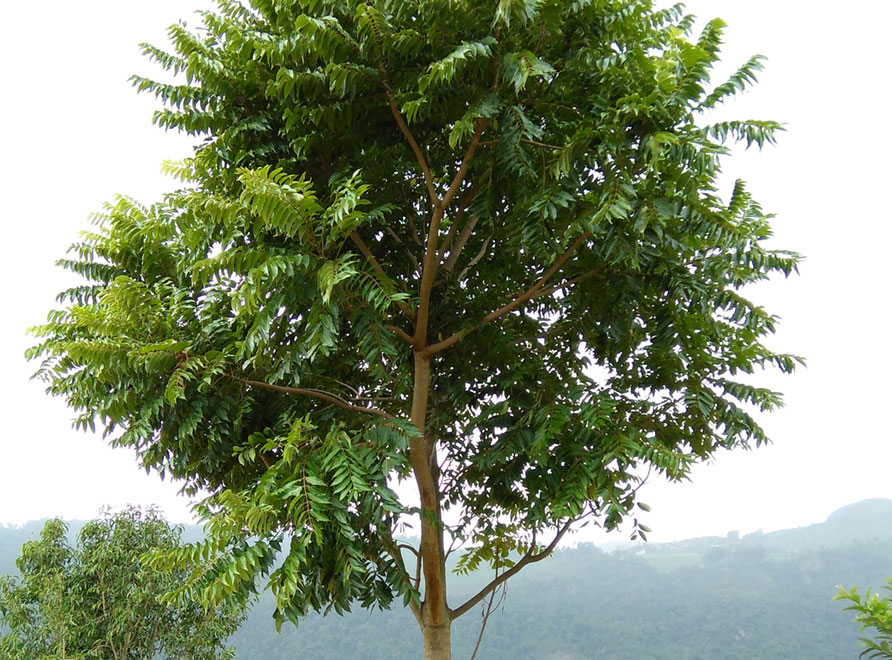
Red Cedar – Toona ciliata
Red Cedar – Toona ciliata
One of these things is not like the others! A member of the Meliaceae (Mahogany) Family, we are including the native Red Cedar here because we have a majestic specimen growing in the Palm Grove at the Royal Botanic Garden Sydney and we couldn't resist sharing it with you.
Australia’s only native Toona species, Toona ciliata is a large, deciduous rainforest tree that grows to 40–60 metres. Five species of the Toona genus are found from southern South East Asia through New Guinea and one is found in Australia.
The Australian Red Cedar was historically heavily harvested for its soft, easily worked timber, which was used in a range of building applications including veneers, panelling and furniture manufacture. Its wood has a faint, pleasant incense-like aroma which is said to repel moths.
There are magnificent specimens of Toona ciliata in various locations across the Botanic Gardens of Greater Sydney – refer to the ‘Where to find’ tabs below.

Toona ciliata's habitat
Tuun, Tuni (Hindi)
Mai-yom-horm (Laotian).
‘Toona’ is derived from toon or tun, an Indian name for this tree; ‘ciliata’ is derived from Latin, meaning ‘having fine hairs’, which references the fine hairs on the edge of the leaf or leaf margin, which resemble an eyelash.
Five species of the Toona genus are found from southern Asia through New Guinea and another is native to Australia, where it is found on the east coast between southern Queensland and northern New South Wales.
The Australian Red Cedar grows at altitudes of near sea level to 1000 metres. It grows in well-developed rainforests on a range of sites but is most suited to upland rainforest (northern Australia) on well-drained, basalt-derived soils with a deep profile and high nutrient load.
It grows far too big for home gardens but a cover of leaf litter mimics its natural habitat when planted as a specimen in parks.
Australian Red Cedar grows quickly and has large branches that form a spreading crown – it is often planted as a shade tree. It has rough, grey-brown bark that cracks into squares. Its leaves are long (up to 90 cm), compound, green and glossy, with 10-14 pairs of leaflets that narrow and taper towards the tip.
The Red Cedar’s small white to cream-coloured flowers form masses on a 30-40 cm spike (called a panicle) in Spring. Each flower is tiny and tubular in shape. Fruit appears after flowering, the green capsules turning brown with age, then splitting open into a star shape which releases small, winged seeds. Toona ciliata is a prolific seed producer and reproduces readily. It can become invasive and suppress the regeneration of other native species.
It is one of only a few deciduous Australian natives (another is Ficus virens or the White Fig, a spectacular specimen of which can be seen in the Royal Botanic Garden Sydney’s Southern Africa Garden).
Visit the Garden Explorer to see where to find the Red Cedar in the Garden.
Visit the Garden Explorer to see where to find the Red Cedar in the Garden.
Visit the Garden Explorer to see where to find the Red Cedar in the Garden.
Garden Sign Story – Red Cedar
Explore the leafy pathways to find some of the oldest, rarest, and most valuable trees in the Garden’s collection.
Plant experiments
Could tropical palms be grown in Sydney? The glasshouses were full, so with 'faint hope of success' the first palms were planted out into the Garden in the 1860s. The young palms were planted here in the old Experimental Garden. Established trees provided shelter: Australian rainforest trees and other ‘exotic’ trees from the tropics including the Elephant’s Foot (Beaucarnea recurvata). Over 300 species of palms now thrive here, including tender species from the equator.
Image: The Palm Grove has a history of exotic names, including ‘The Jungle’ and ‘The Forest’. ©RBG Sydney.
Grand old giants
Look up! Towering above the palms are the Garden’s oldest rainforest trees — the Red Cedar (Toona ciliata) and the Hoop Pine (Araucaria cunninghamii).
Image: The Red Cedar was already a giant in 1910. ©Royal Botanic Garden Sydney
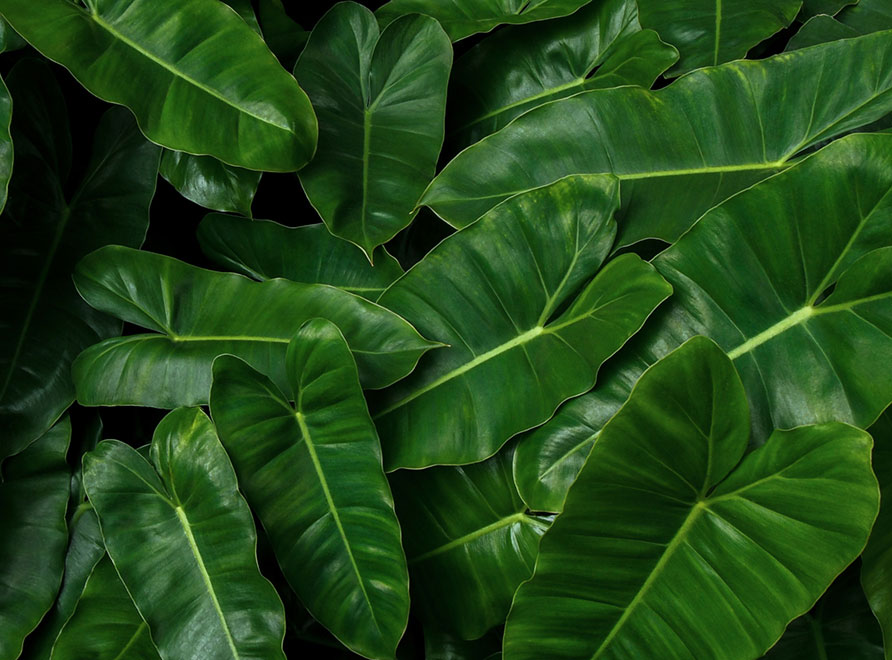
Philodendron – Philodendron imbe
Philodendron – Philodendron imbe
Our second guest star in the Palm Grove is a member of the Araceae (Arum) Family, Philodendron imbe. An evergreen climbing philodendron from Brazil, Philodendron imbe is a vigorous shrub that grows up to 5 metres. It has aerial roots that trail down, creating a mass of glossy green leaves on whatever they are growing on. Because variegated Philodendrons are rare they can be more expensive than other species’.
Enough rope
In Brazil, P. imbe’s roots are gathered from the wild and used as a fibre for making rope and baskets.
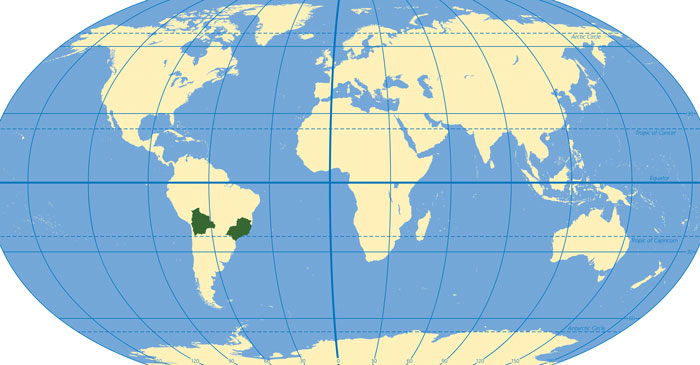
Philodendron imbe's habitat
Philodendrons like moist, well-drained humus-rich soil and a partially shaded position. They are low feeders but benefit from an occasional feed of liquid fertiliser. When grown outside P. imbe prefers humid, warm conditions (over 12°C).
Philodendron
Mottled imbe
Variegated Philodendron
Philodendron is from ‘philo’ which is the Greek for love or affection and ‘dendron’ which means tree. Literally translated it means “tree lover” and refers to the plant’s epiphytic ‘clinging’ or ‘embrace’ of trees!
‘Imbe’ is the Portuguese word for the cordage or fibres derived from the stems of P. imbe.
Philodendron imbe is a tropical South American epiphyte native to Bolivia and Brazil. It is found from low elevations up to 1400 metres or more.
P. imbe’s flowers are a pale yellow to cream spathe, similar to Monstera deliciosa’s flower. Like many Araceae species, it is able to heat the flowering spike of tiny flowers closely arranged around its fleshy axis when its pollen is ready for fertilisation. The heat increases the aroma released by the plant, attracting more pollinating insects. It can also make the insects more virile, thus increasing the level of fertilisation.
Visit the Garden Explorer and type 'Philodendron imbe' into the 'Common or Scientific Name' field, then click 'search' to be shown where it can be found in the Garden.
Garden Sign Story – Pimp Your Pole!
Tropical appeal or telephone pole? Palms in suburban gardens can grow larger than expected — creating a gardening challenge!
Palm Passiona
Mania for ‘exotic’ tropical plants swept Europe in the 1800s. Palms were every home’s must-have accessory... and wealthy collectors filled glasshouses to overflowing.
Image: A refined afternoon tea in the conservatory, as shown in The Illustrated London News, 1881. ©North Wind Picture Archives Alamy
Pimp Your Pole
The easiest way to transform a bare palm trunk is to let a climbing plant go wild. Tropical climbers like this Philodendron imbe and the nearby Swiss Cheese Plant (Monstera deliciosa) will happily scramble up a palm trunk. With spectacular evergreen leaves, they’re perfect for adding some eye-level greenery.
Image: These suburban palms are so tall they don’t fit in the photo! ©Fotoluminate LLC
Sydney's best kept secret – Growing Friends Plant Sales
Visit the Botanic Gardens' Growing Friends Nursery and check out the range of rare, exotic and native plants on sale. Every time you take a plant home from the Growing Friends you're supporting the Australian Institute of Botanical Science's conservation research. The selection of plants for sale is seasonal and varies, so don't be a stranger!